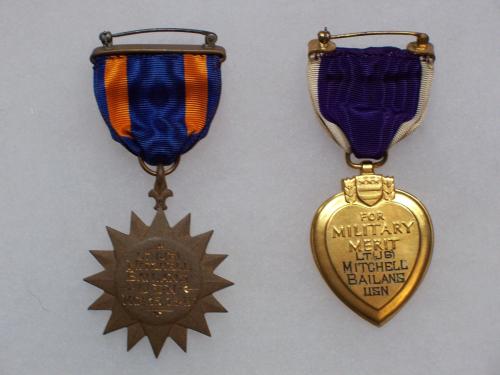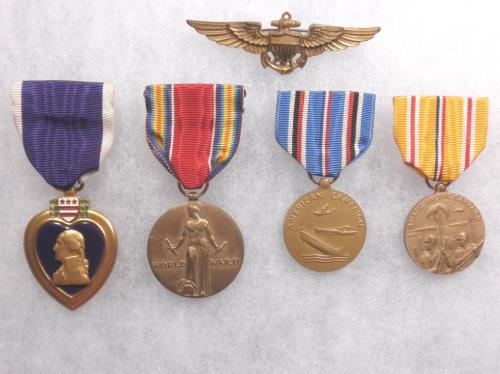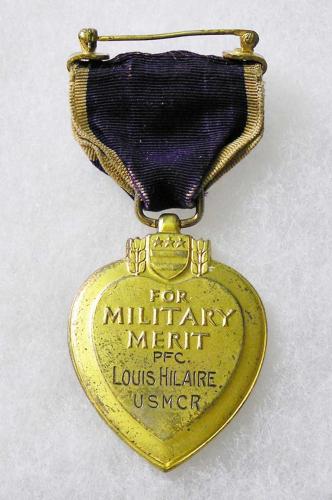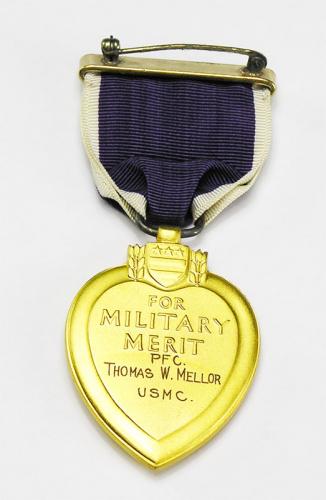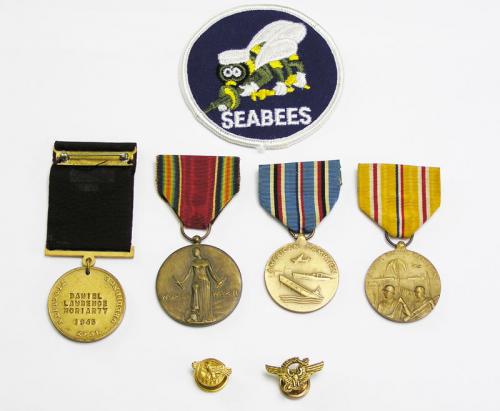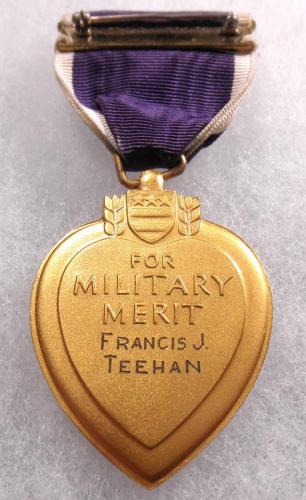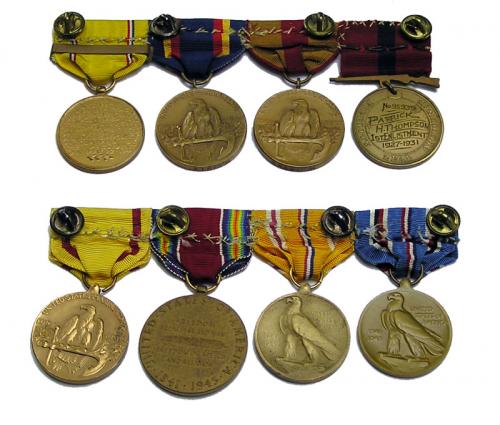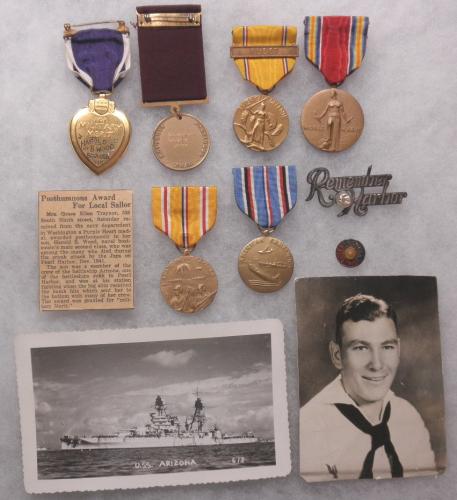Frank Gurule was born in New Mexico February 16, 1924. He enlisted in the Army on June 11, 1943, and his records list him as "Mexican". He was killed by gunshot wound to the chest when his outfit was near Chiusdino, Italy. He was initially buried in the US Cemetery in Tarquinia, Italy. In 1949, at his family's request, he was reburied in Catholic Cemetery in Trinidad, Colorado. His family, father Ramon, mother Mary, sister Esequiel and brother Benito and Frank had moved to Colorado prior to 1930
This group includes PFC Gurule's officially engraved posthumous split brooch Purple Heart with its presentation box. Paperwork includes a copy of an extensive Individual Deceased Personal File for PFC Gurule.
The move to Italy was initiated 15 June when the Division, with its greatest "maneuver" lying ahead, left Staging Area No. 2 to embark on ships in the harbor of Oran. The following day, 16 June, the 91st less its rear echelon headquarters steamed out of Oran destined for Naples and the smaller port of Bagnoli, four miles north of the great base. It arrived on the 19th of June and marched to Staging areas in the vicinity of Bagnoli, where it began preparing for imminent entrance into combat. On 20 June it was assigned to Fifth Army. First steps toward moving the Division into the line were taken on 27 June, when General Livesay received a telegram from, General Mark W. Clark, commander of Fifth Army, ordering the Division to move on approximately 30 June to the vicinity of Civitavecchia, north of Rome. At 0800 2 July the Division Command Post was opened at Montalto di Castro, four miles east of Civitavecchia.
In the meantime, the 361st Regimental Combat Team had entered combat attached to the 36th Division. Having landed at Anzio on 1 June the Regiment took up positions the following night on the ridge four miles northwest of Velletri. At 030530 June they jumped off, the first element of the 91st Division to enter combat, and four hours later they received their first baptism of fire. The next day the Regiment reverted to the control of VI Corps, but it was immediately assigned to the 34th Division and began a series of rapid moves to the north. On the night of 8-9 June the 361st Infantry relieved the 133rd Infantry, 34th Division, and at 090530 June attacked north astride Highway 1. Progress was rapid with the major delaying factors being mines, demolitions and occasional enemy delaying positions. In succession the Regiment captured Tarquinia, Montalto di Castro, Nuxiatello, and Orbetello. (The Allies had entered Rome on June 4, 1944)
One of the stiffest engagements was met at Ponte d’Istia on the Ombrone River. Here the Germans had a strong holding position in the town and two hills nearby. By infiltrating a whole Battalion over a partially destroyed dam single file, one man at a time, and by taking advantage of all avenues of covered approach, the Regiment completely surprised the enemy. Although they made a determined effort to stop the attack with heavy artillery and mortar concentrations, the 3rd Battalion pushed ahead, and by 162030 June they had captured Hills 61 and 66, as well as the town of Ponte d'Istia itself. Many casualties were inflicted on the enemy in the engagement and approximately 80 prisoners were taken.
The rapid advance northward continued until 19 June, when the Regiment was assembled near Batignano. Here, after a day's rest, they were attached to the 1st Armored Division. To all intents and purposes the Regimental Combat Team for the time being lost identity. The 2nd Battalion was attached to Task Force Howze, while elements of the other Battalions were attached to any one of three motorized Combat Teams as supporting infantry. The mission of the infantry was to ride the tanks and the tank destroyer decks until opposition was encountered: then the infantry was to deploy and attack. The main axis of advance was the Batignano-Paganico-Roccostrada Highway.
SOLD to a collector 04-2021
